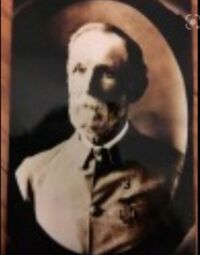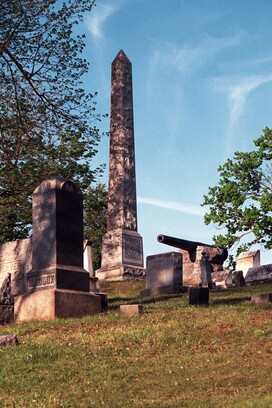|
It shouldn’t be a surprise that Front Royal has a rich local history. The natural attractions of this location, from the Shenandoah River to the surrounding mountain beauty have brought a steady stream of settlers and visitors to the town throughout its varied history. Read on for nine fun facts about Front Royal’s local history, starting with the Native Americans and ending with Bing Crosby! 1. The Iroquois Once Hunted in Front Royal The entire Shenandoah Valley, including the land that would become Front Royal, was rich in natural resources for Native Americans, and saw many tribes both pass through and build settlements. The Iroquois were the last Native American group really to take possession of the valley. Unlike some other tribes, their culture was based primarily on hunting, and they did not attempt to develop farms, but used the valley as hunting grounds. The Iroquois Confederation sold the land that included the future Front Royal to Colony of Virginia in 1744. 2. Front Royal was the Home of the Shenandoah Valley’s First Ferry Front Royal sits at the confluence of the North and South Forks of the Shenandoah River. It was here that the Shenandoah Valley’s first ferry was established in the 1730s. The ferry helped the Valley’s many travelers cross the Shenandoah River. 3. Front Royal’s Original Name was LeHewtown  Peter LeHew Peter LeHew The town that would become Front Royal first came into existence as LeHewtown in 1754. The name came from Peter LeHew, an early settler who bought a tract of property in what would become the center of the town. 4. Front Royal was a Popular Stop for Travelers Front Royal (or LeHewtown) saw many travelers coming through. The Shenandoah River, brought many boatmen into town. The Shenandoah Valley was also a natural route for livestock drivers. At the northern end of the Shenandoah Valley, and the tip of Massanutten Mountain range, Front Royal was a natural meeting point for travelers. Due to the large numbers of taverns that popped up to serve the passers-through, Front Royal also gained the nickname “Helltown.” 5. We’re not sure where Front Royal Got its Name In 1788, Front Royal officially received the name it has today. No one is exactly sure where this name came from, but there are several interesting theories. Our favorite dates back to the days of the Revolutionary war. A camp of British soldiers was located near Front Royal. Comers to the camp must respond with the password “Royal” to the sentry’s challenge of “Front.” Thus the name “Front Royal” came into common usage. 6. Front Royal was the Home of Virginia’s Second Subscription Library Front Royal was on the forefront of literacy in Virginia. In 1799, Front Royal became the home of the second subscription library in the State. This library has grown and changed location several times over its more than two hundred years. Now it exists as Front Royal’s Samuels Public Library. 7. Over 200 Confederate Soldiers are Buried in Front Royal  Prospect Hill Cemetery - Front Royal, VA Prospect Hill Cemetery - Front Royal, VA Front Royal has a rich Civil War history, and was the location of the Battle of Front Royal during Stonewall Jackson’s Shenandoah Valley campaign. After the war, the remains of the Confederate soldiers who had died in Warren County were gathered and buried together at Soldier’s Circle in Front Royal’s Prospect Hill Cemetery. 8. Skyline Drive Put Front Royal Even More on the Map The 1920s were a time of exciting developments for Front Royal, as the Blue Ridge Mountains were selected as the location of a National Park for the Eastern United States. This park came into existence as Shenandoah National Park, and its northern entrance station is located right in Front Royal. The National Park draws outdoors lovers to the Front Royal all year round, especially in the fall. They find a warm, small-town welcome, great facilities, and gourmet dining, in addition to the natural wonders of the park that have delighted generations of visitors. 9. Bing Crosby was a Fan of Front Royal Singing and acting star Bing Crosby visited Front Royal several times. In 1949 and 1950, he helped raise funds for a baseball stadium by appearing at several fundraising events, and donating personally to the stadium. Today, Front Royal’s Bing Crosby Stadium is the setting of baseball fun all summer long.
From Iroquois Hunters to Civil War soldiers, and from Early Traders to Stars of the Screen, Front Royal has seen it all. Plan a visit to Front Royal to explore even more of our history and find out what our exciting small town has in store for you! The Shenandoah Valley is probably most famous for its Civil War history. But to those who know and love the beauty and natural fertility of this area, it should come as no surprise that the Shenandoah Valley had human inhabitants well before Europeans arrived. In honor of these fascinating early peoples, we’ve rounded up six fun facts on the Native American History of the Shenandoah Valley. 1. There’s a Lot We Don’t Know about Native American History This is more of a non-fact than a fact, but it’s important to keep in mind! Native Americans aren’t the easiest people to learn about. They lived quite a long time ago, and they left behind few remains for our historians to find. The Native Americans were often nomadic people whose relationship with the natural world seems to have been one of great respect. They made an effort to leave little impact on the natural systems of which they were a part. However, they did leave some traces of their presence, including pottery shards and burial mounds. Some of the more permanently settled Native American groups also left behind evidence of villages and food storage systems. 2. The Keyser People were among the more settled inhabitants of the Shenandoah Valley The Keyser people were a group of Native Americans believed to have immigrated to the Shenandoah Valley from the Ohio valley. They seem to have enjoyed a more farm-based and stable culture than some of their hunter-gatherer counterparts, and left traces of large villages of up to 200 inhabitants. Artifacts of shellfish and quartz suggest that the Keyser people were also importing goods from coastal and other regions. It is believed that they exported deer hides from the Shenandoah Valley. Remains of a Keyser village have been discovered near Front Royal. 3. There were tensions between hunter/gatherer and farming tribes It is believed that the Iroquois, whose culture was based primarily on hunting and gathering, may have been responsible for emptying the Shenandoah Valley of its Native American farmers and villages. These hunter-gatherers thrived in lands otherwise devoid of human settlers. They may have forcibly removed the villagers, whose settlements threatened their own way of life. 4. Native Americans blazed the trail for some modern day Shenandoah Valley roads It was buffalo, and the Native Americans hunting them, who originally formed the trail that would become Virginia’s Route 11. Running north and south through the Shenandoah Valley, Route 11 closely parallels the busier and less scenic I-81. Whether on the highway or the byway, many modern travelers through the valley are following a Native American route more or less closely. 5. Native Americans formed a complex trail system in the Valley Native Americans traveled the Shenandoah Valley for many purposes. Hunting, trade, warfare, and the search for the best seasonal forage areas were among their many reasons for travel. Their journeys eventually formed a system of trails known as the Great Warrior Path. 6. Visitors can see Native American Artifacts at the Strasburg Museum The Strasburg Museum is found in Front Royal’s neighboring town of Strasburg. It’s a fascinating historic building, and a treasure trove of local history. You’ll find Virginia history since the time of the Colonial Era here. If you’re interested in finding out more about the first known human inhabitants of the Shenandoah Valley, you can see Native American artifacts too.
The story of the Native American inhabitants of the Shenandoah Valley is a fascinating, and often overlooked part of the Valley’s history. But exploring the Shenandoah Valley with these facts about its earliest human inhabitants in mind can provide a thrilling new perspective on one of Virginia’s most beautiful landscapes. |
AuthorDiscover Front Royal Archives
February 2023
Categories
All
|